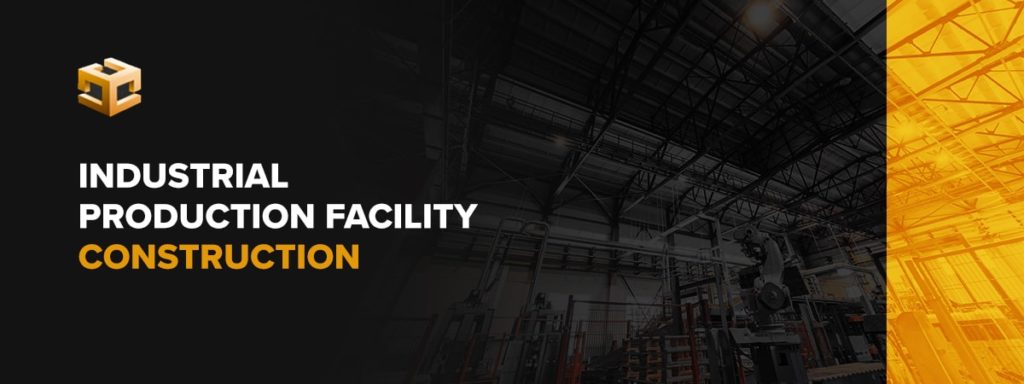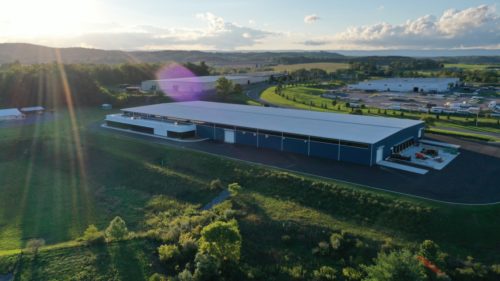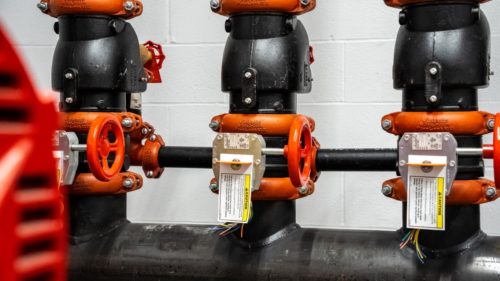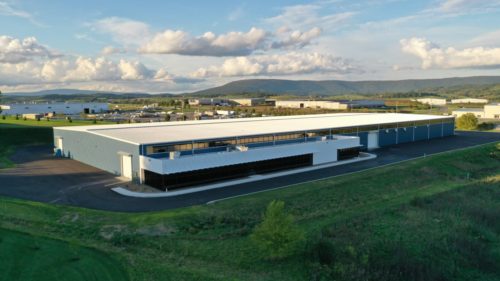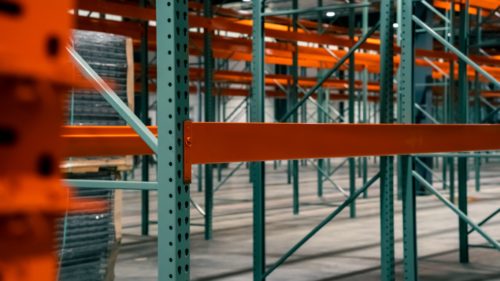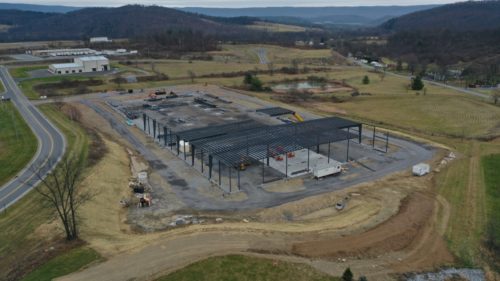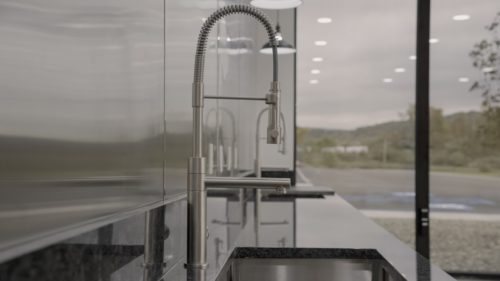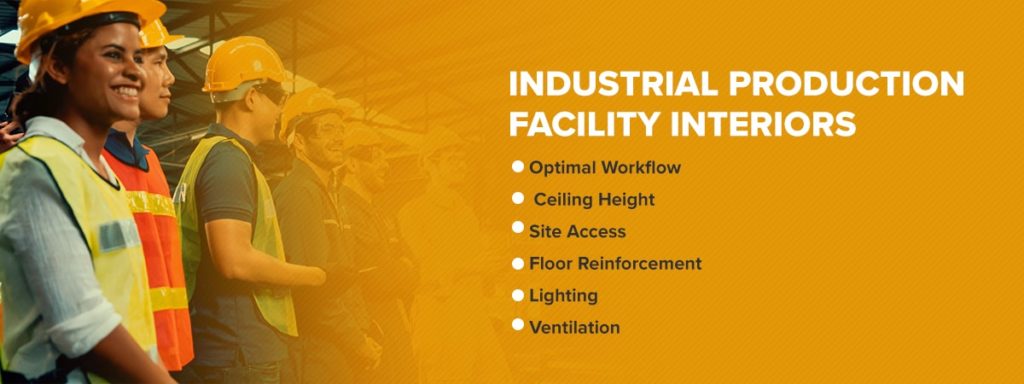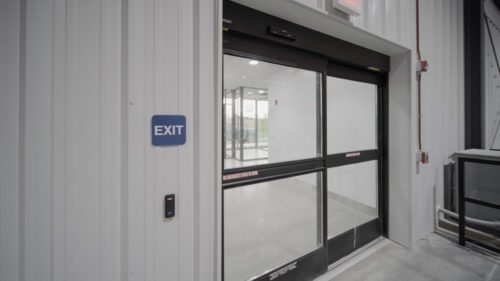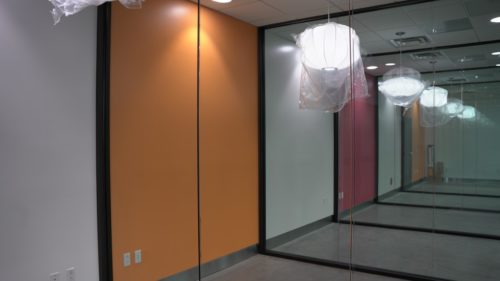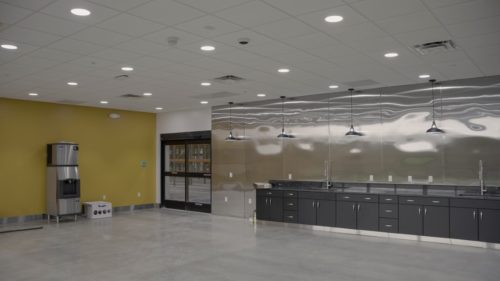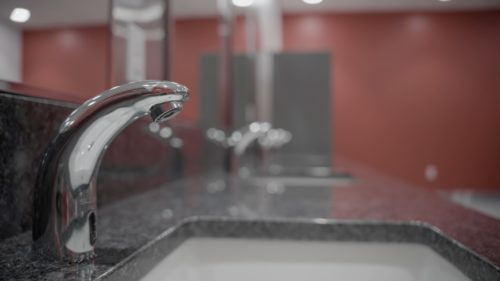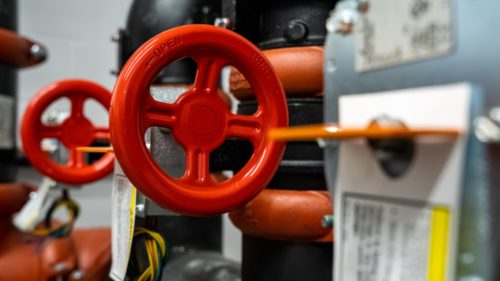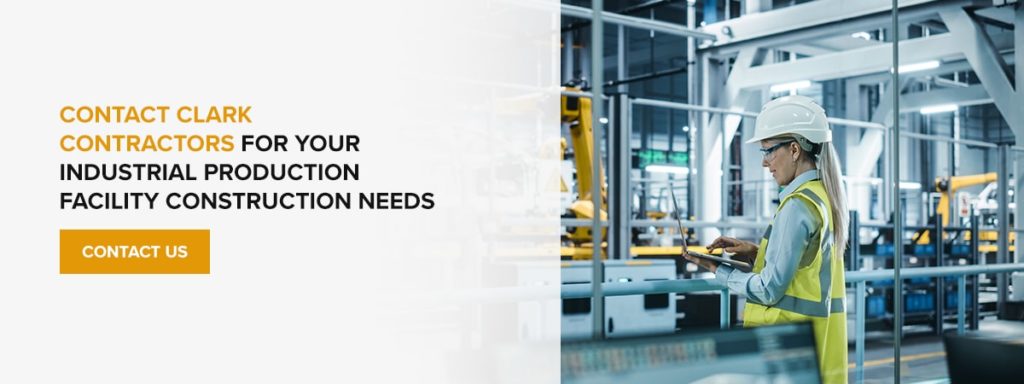PA Industrial Production Facility Projects: CaptiveAire
Constructing an industrial production facility can be a complicated task. The design should balance effectiveness, maintainability and long-term operational costs. Because each industrial production facility is unique, many manufacturers need these locations custom built.
Contact Clark Contractors, Inc.
When your manufacturing business is ready to move into a larger facility or expand to another location, it’s essential to ensure your new industrial production facility meets your requirements. You need a construction partner that understands your needs and can provide the construction services you need. Learn the details about industrial production facility construction in this helpful guide.
What Are Industrial Production Facilities?
An industrial production facility is where workers use tools and machines to manufacture products. These facilities, also known as manufacturing plants or factories, are often large building complexes. Industrial production facilities are essential in the modern economy, producing everything from automobiles and ships to personal care products.
Although industrial production facilities often look similar from the outside, each type of industrial space has unique features that support production. For example, most industrial production facilities have heavy machinery for assembly line production. Large facilities may also have multiple means of loading and unloading shipments, including rail, highway and water access. Some facilities need special chemicals for the production process, so manufacturers need places to store their supplies safely.
Depending on their needs, many industrial production facilities also have highly specialized infrastructures. These could include systems for:
- Waste drainage
- Ventilation
- Water and gas pipes
- Oversized loading docks
- Chemical lines
Examples of Industrial Facilities
The industrial process market is broad and covers a range of industries. Manufacturers use this kind of building in any industry that produces goods out of raw materials. Here are a few of the major manufacturing industries that manufacture their products in industrial facilities:
- Aerospace: The aerospace industry produces large equipment like airplanes, rockets, satellites and other spacecraft.
- Apparel: Apparel manufacturers need enough space to house materials for producing clothing, footwear, accessories and more.
- Chemicals: In chemical manufacturing, businesses process raw chemicals to produce pharmaceuticals, additives for personal care products, insecticides and much more.
- Automotive: Companies in the automotive industry need extensive industrial facilities to manufacture all vehicle components, including engines and bodies.
- Consumer electronics: These products include computers, smartphones and household appliances.
What Are Different Types of Industrial Structures?
Companies use various types of buildings for industrial projects. Consider these categories of industrial structures and whether they would be helpful in your industry:
1. Manufacturing Facilities
Manufacturing is an essential aspect of industrial production. Industrial production plants might measure tens of thousands of square feet, depending on the specific company’s needs.
2. Warehouses and Storage Facilities
Industrial companies often need warehouses and storage facilities for managing their products and materials. These buildings usually have large, open spaces. However, warehouses also include systems for companies to organize products for shipping and transport. Companies typically keep materials in storage facilities before use in manufacturing.
3. Substations
Substations are electrical facilities that house equipment, generators and circuit lines that change the voltage between levels or alternate currents. These industrial projects are often located near industrial facilities requiring high electrical use.
What Are Industrial Buildings Made Of?
Most industrial production facilities prioritize function and safety over aesthetic design. These facilities usually feature these design elements:
- Large spaces: Industrial production facilities need plenty of room for large pieces of heavy equipment, production supplies and workers.
- Minimalist construction: Industrial facilities are minimal and don’t have many architectural flourishes at all.
- Exposed elements: Many industrial production facilities have exposed walls and ductwork. This characteristic is also due to the emphasis on function over aesthetics.
- Natural light: Construction companies help offset lighting costs by designing these buildings with large windows to take advantage of the natural light.
Although industrial buildings vary in design, they are all made of materials like:
- Brick walls.
- Steel beams.
- Concrete floors.
- Metal building materials.
Industrial Production Facility Interiors
When you are constructing a new industrial production facility, open communication with your contractor ensures a building that truly meets your company’s needs. An effective contractor will use the latest design tools and collaborative design to construct an industrial production facility to your specifications and requirements.
Whether your objectives are limited or broad, the interior of your industrial production facility should help you meet them. Here are a few of the top factors to consider when designing the interior of your facility:
1. Optimal Workflow
One of the essential considerations for an industrial facility is how your company works daily. The building floor plan significantly impacts a company’s workflow.
Your industrial production facility should optimize production and efficiency so that workers can quickly move between areas. When designing your facility’s interior, consider the steps of production and at what point in the process workers need access to each space. An ideal layout will streamline movement within the facility.
2. Ceiling Height
Ceiling height determines building clearance and the equipment you can have inside your facility. Industrial facilities in heavy manufacturing need high ceilings to contain massive products as they are constructed, like airplanes and ships. Even light industries sometimes require vaulted ceilings to accommodate equipment. Your local building codes will also prescribe how high your facility’s ceilings must be for sprinkler systems.
3. Site Access
An industrial production facility’s shipping and receiving area is one of the most vital aspects of the facility. Optimizing design here can help with inbound and outbound shipping. Depending on your industry, you may need greater site access for several large trucks. You might also decide on interior docks for protection from the elements. Optimizing traffic flow is another essential aspect of site access.
4. Floor Reinforcement
It’s crucial to select the right flooring and construct an industrial facility so that the floor can support heavy loads and building support columns. Concrete slabs usually provide the reinforcement and stability necessary in these facilities. Concrete flooring can also withstand lots of foot traffic and potential spills.
5. Lighting
Having adequate lighting is essential for efficient production and safety. Large windows can help with lighting, though you probably also need the help of a construction company that can handle electrical installations.
6. Ventilation
Proper ventilation could be another essential requirement, depending on your facility’s needs. Adequate ventilation will remove contaminants and cycle clean air into your facility to reduce accidents, employee health issues and potential fires.
Industrial Production Facility Fixtures and Other Installations
Your build will likely involve other installations to make production smooth and enhance your facility’s design. These industrial facility installations are usually essential to any construction project:
1. Doors and Windows
Including doors and windows is a vital step in any new building. An industrial production facility might need specially designed doors to accommodate equipment. Extra-large windows may help cut down on lighting costs.
2. HVAC, Plumbing and Electrical
Proper lighting and plumbing are essential for any facility. Your new build might have unique electrical installation needs. Most buildings also require plumbing services for water and sewer management.
In addition, your facility may need heating, ventilation and air conditioning (HVAC) systems installed to keep rooms and workers comfortable. Installation of HVAC solutions can be a complicated process that requires careful planning. An experienced contracting firm can handle all of these services in a cost-effective and timely manner.
3. IT Installation
Modern manufacturing companies also rely on hardware and software to manage production, inventory and financial information. In a new facility, you’ll likely need IT installation to support all of your networks. IT installation involves setting up the necessary cables and wires throughout your building.
4. Landscaping
From parking lots to your facility’s surrounding landscape, landscape design should reflect your company’s vision and enhance your facility’s appeal. Professional landscaping can enhance your company’s reputation and help attract partners, vendors or customers. Finding a contractor that can provide landscaping services can help you extend your facility’s value.
Contact Clark Contractors for Your Industrial Production Facility Construction Needs
When you need to expand your industrial production facility, contact Clark Contractors. We use the latest design tools to design and construct the industrial facility your company needs. Our range of services keeps you on schedule and on budget, from planning to project completion.
Browse our services and project samples or learn more about what Clark Contractors can do for you.



